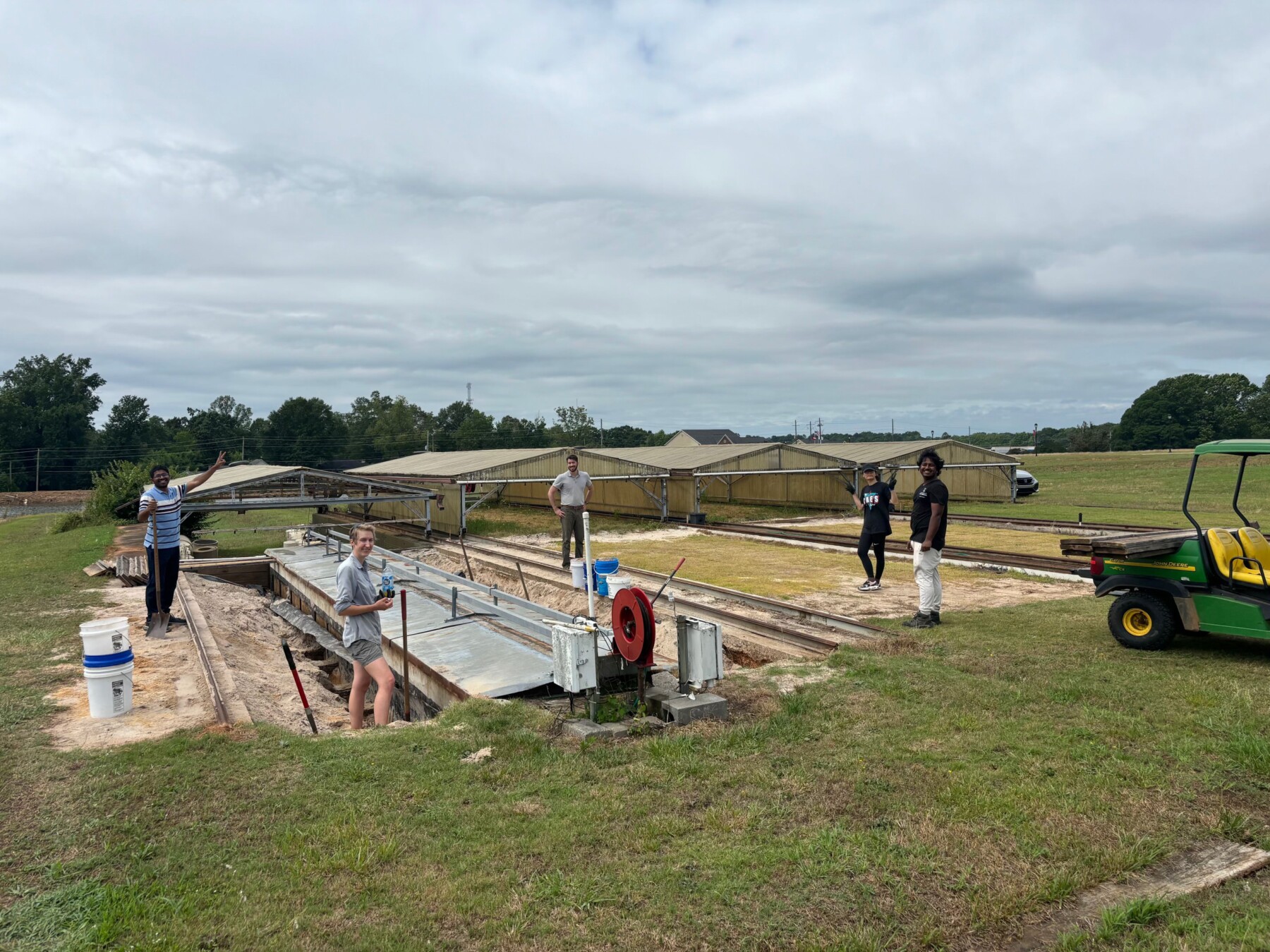The Georgia Envirotron is located on the Griffin Campus of the College of Agricultural and Environmental Sciences. (map)
Envirotron

- Ten Conviron growth chambers, including 72-sq ft CG72, 36-sq ft PGW36, and ATC40. Chambers are equipped with high-intensity lighting with temperature, humidity, carbon dioxide control, and automated watering system.
- Laboratory and work space in the 6000-sq ft Envirotron work building. The laboratory is equipped with GC, UV-Vis, pH meters, centrifuge, microscopes and other basic equipment.
Rainout Shelters

Three automated rainout shelters with transparent cover and automated precise irrigation for conducting controlled water research.
Lysimeter

Lysimeter is currently being renovated. It’s modified into weighing lysimeter with integrated data collection system. Besides automated rainout shelter it has precise watering and fertilization system in the easily accessible underground compartment.
ADDITIONAL AVAILABLE EQUIPMENT
Plant Photophysiology Studies: LumiGrow Pro LED Lights sets are available with adjustable amount of red, blue, and white light to be customized to growing needs. LI-COR spectroradiometer, light meter, and leaf area meter (LI-COR 3100) can be deployed at the Envirotron.

Plant Roots Phenotyping: Non-destructive high-throughput root system phenotyping platform for selective gene function screening has been developed at the Envirotron.
Plexiglas Chambers Setup for Gases Studies: Plexiglas chambers setup for Ozone or other gases studies in Floricultural Greenhouses studies have been conducted by Dr.Edward Law and available for use at the Envirotron (see the set up bellow).
Ambient Ozone Concentrations Measured in Floricultural Greenhouses, S. Edward Law

Abstract. The US green industry has expanded remarkably over the past 10-15 years to supply the nation’s landscaping and interiorscaping markets. Greenhouse production of floricultural products, which has increased 10-fold during the past three decades, now represents a growth industry whose vitality must be ensured. Air pollution, especially the pervasive and highly oxidizing gaseous pollutant ozone (O3) which can commonly attain ambient concentrations in the 50-150 ppb range, is widely known to detrimentally impact agronomic, horticultural, and forestry plant production. Our present work focuses upon ozone exposure for greenhouse-grown floricultural plants. Experimental measurements at 10-minute intervals throughout an August-December “ozone season” document the ambient concentrations of ozone both inside and outside commercial greenhouses and correlate these data with simultaneously measured solar irradiation and air temperature values. Season-averaged diurnal patterns show 1.76-fold increased indoor vs. outdoor O3 concentrations during the 7-hour most active daily period of photosynthesis (0900-1600 h) when plants are highly vulnerable to ozone. We thus hypothesize that a greenhouse may act as an ozone-producing reactor exacerbating potentially injurious exposure to greenhouse plants.
Detailed experiment description presented at ASABE Meeting can be downloaded here.
Other Available Equipment: Soil respiration measurement system, Campbell Scientific dataloggers, LI-820 CO2 analyzer, customized gas exchange chambers.
AREAS OF INTEREST
Future Envirotron development will increase the scope of the research that can be conducted, especially in terms of environmental variables to be controlled and spatial scale.
Future developments include: install drainage lysimeters in greenhouses; complete an upgrade of greenhouse controllers; install gas exchange system to growth chambers; and assemble rapid cycle temperature chamber.
In addition, in order to promote research collaboration with scientists from other locations, we will post Envirotron treatments and data on an FTP or Web site to make them accessible via the internet.